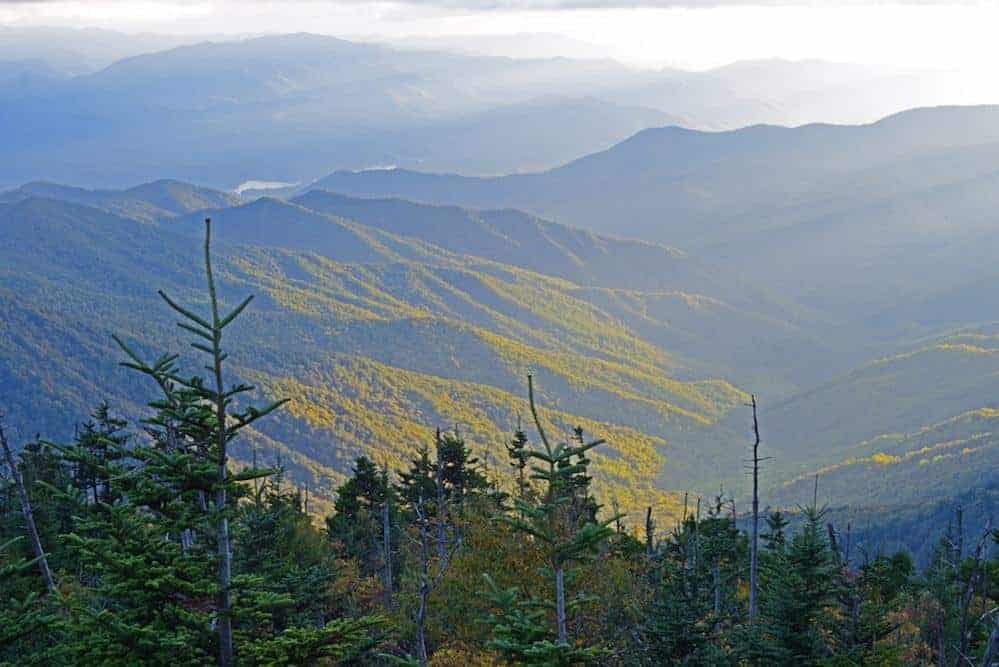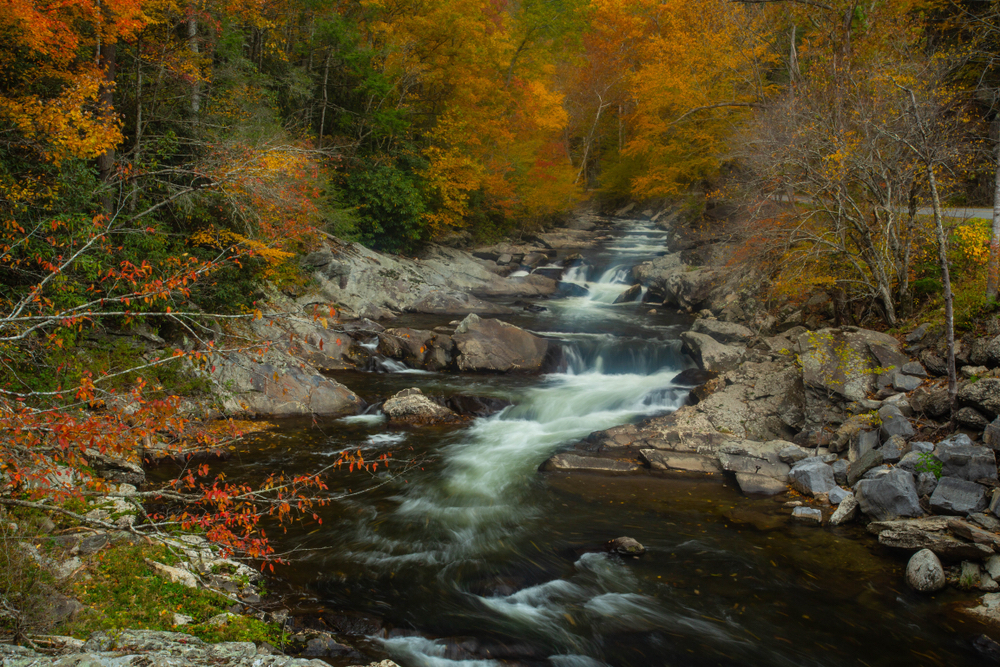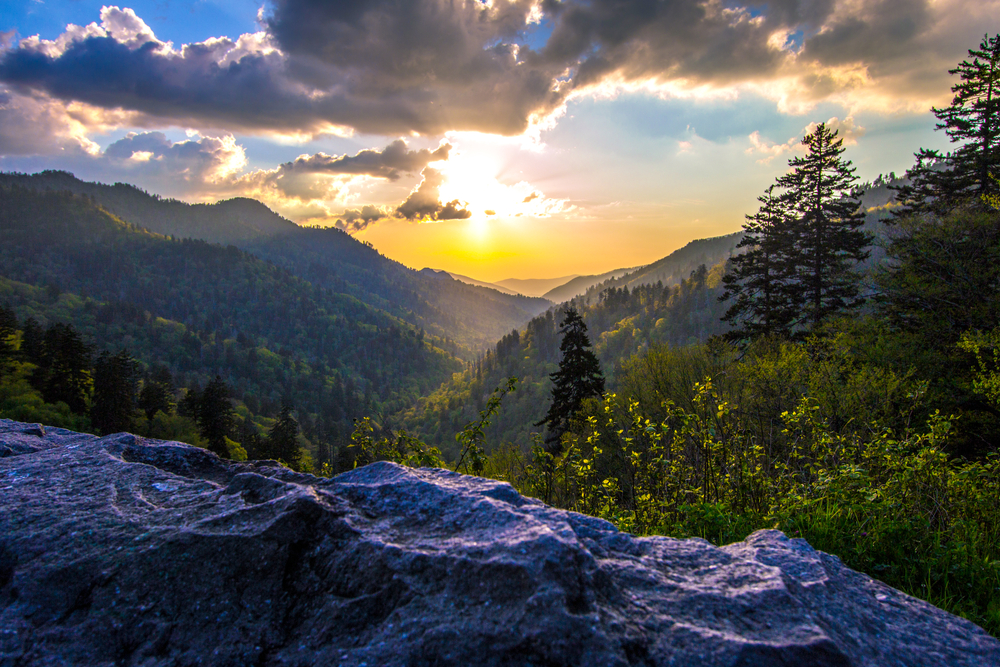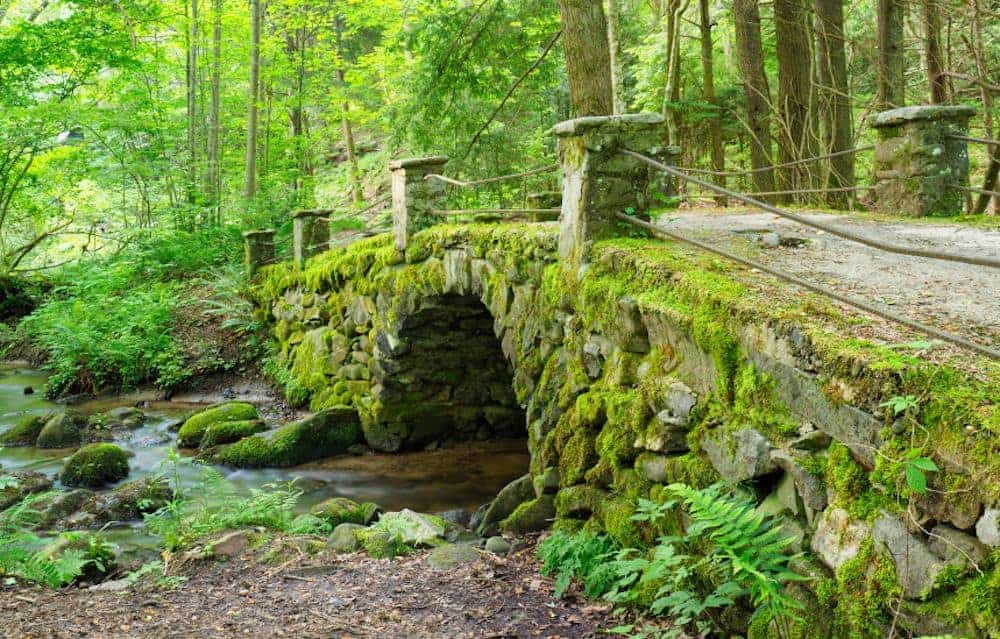
The Highest Point in the Smoky Mountains: Guide to the Top 5 Peaks
There is no shortage of breathtaking mountain peaks in East Tennessee! The Great Smoky Mountains National Park is home to some of the most spectacular landscapes in the Southeast. The crest of the Smokies extends in an unbroken chain of summits that rise higher than 5,000 feet for more than 36 miles.
Have you ever wondered what the highest point in the Smoky Mountains is? Visit My Smokies did a little research to bring you the five highest peaks in the national park.
1. Clingmans Dome
At 6,643 feet, Clingmans Dome is the highest point in the Smoky Mountains and the highest point along the Appalachian Trail! Millions of people visit the observation tower on the summit of Clingmans Dome each year to enjoy breathtaking panoramic views of the national park. When the sky is clear, guests at the tower can see for over 100 miles.
Clingmans Dome is so tall that the peak can be between 10 to 20 degrees cooler than the lower elevations of the Smokies. If you decide to visit Clingmans Dome, we recommend dressing in layers and bringing a jacket, even during the summer months. It is also worth noting that the half mile paved trail to the observation tower is quite steep. Nevertheless, we think being a little winded is totally worth it to enjoy the stunning views from the top of Clingmans Dome!
(See Also: 5 Secret Places to See on the Way to Clingmans Dome in the Smoky Mountains)
2. Mount Guyot
Located on the North Carolina/Tennessee border, Mount Guyot is the second highest peak in the Smokies, with an elevation of 6,621 feet. Unlike Clingmans Dome, Mount Guyot is not a popular tourist destination, since it is very isolated and extremely difficult to climb. The upper slopes of this isolated mountain are covered in a dense spruce-fir forest that has remained undisturbed for centuries, since neither Native Americans nor white frontiersmen ever settled there.
The mountain takes its name from Arnold Guyot, a Swiss geographer and professor at Princeton who measured the elevations of many mountains in Southern Appalachia. Interestingly, there is another Mount Guyot in New Hampshire that is also named after the geographer.
 3. Mount LeConte
3. Mount LeConte
While Mount LeConte may not be the highest point in the Smoky Mountains, it is the highest peak that is completely within Tennessee (both Clingmans Dome and Mount Guyot straddle the border with North Carolina). Mount LeConte has an elevation of 6,593 feet, and reaching the top is considered a rite of passage for some of the most dedicated hikers in the Great Smoky Mountains National Park.
There are a number of trails that lead to Mount LeConte, including the Alum Cave Trail, The Boulevard Trail, Bullhead Trail, Rainbow Falls Trail, and Trillium Gap Trail. All of these treks are between 11 and 16 miles round trip, so they are only for serious hikers.
While all of the trails are beautiful, we are particularly fond of the Trillium Gap Trail because it is frequented by llamas on many Monday, Wednesday, and Friday mornings! The llamas are used to bring supplies to the LeConte Lodge, a special resort that you can only reach by hiking to the summit of Mount LeConte.
4. Mount Buckley
Mount Buckley is notable for being the nearest mountain to the summit of Clingmans Dome. At 6,580 feet, the mountain offers some scenic vistas, but unfortunately, most of the views of the surrounding peaks are obstructed. The majority of people who visit Mount Buckley do so because it is part of the Appalachian Trail. The mountain is named after Samuel Botsford Buckley, the geologist who first estimated the elevation of the peak.
5. Mount Love
At 6,420 feet, Mount Love is the fifth highest point in the Smoky Mountains. Like Mount Buckley, Mount Love is located near Clingmans Dome. Hikers along the Appalachian Trail pass through the summit of Mount Love when they make their way from Clingmans Dome to Mount Collins. The peak of Mount Love is densely forested, so there are only a few spots with unobstructed views.
For information about everything to see and do in the Smokies, check out our guide to the Great Smoky Mountains National Park!






Comments are closed.